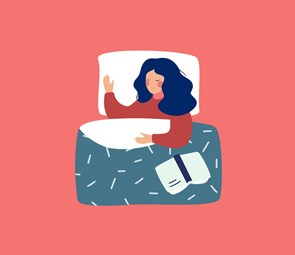Physical environments to support staff mental health and wellbeing
Natural elements such as plants can help connect school staff with the outside world and create a calmer workplace environment. Green is a very effective stress-buster!
Guides / 1 min read

Invest in some plants
Colour psychology has shown that green is a mood-enhancing colour and is known to be a very effective stress-buster, so combining nature with the colour green is a win-win! Why not contact your local garden centre and see if they would be willing to donate some plants?
Create a photo board
Schools boards are used for many things, so why not create a wellbeing board for staff to add pictures to of their favourite countries, beaches, parks and outdoor spaces? Some research suggests that just looking at images of nature is enough ‘natural’ stimulus to lower stress levels. This is a great way to bring the outdoors in!
Let the fresh air flow
The quality of air within a workplace, especially while coronavirus infections are still high, can have a significant impact on the health of staff and in turn productivity. One simple way to let the fresh air flow is to encourage the opening of windows. But it’s not just a case of letting the air flow from outside, you should also think about how you reduce any pollutants within the school environment. This may include pollutants from:
- Boilers and generators
- Air conditioning systems
- Garden equipment
- Kitchens and canteens
The clean air for schools framework can help you think about how you approach this and some of the things you may want to consider, both in terms of the internal environment but the wider impact schools have on pollution levels.
Exposure to natural daylight
Studies (1) of lighting in the workplace have consistently shown that sunlight has positive effects on workers’ subjective well-being; and that employees prefer to work near windows or in workspaces with natural lighting. Where possible staff should be exposed to natural daylight. Where this is not possible, staff should be given adequate opportunities to get outside and encouraged to do so. If your school building has little access to natural daylight, you should consider the following:
- Whether you are maximising the natural lighting you do have, for example move big, bulky furniture that blocks any sunlight.
- Taking into consideration the need for staff to get fresh air when allocating work and timetables.
- The possibility of adding skylights.
- Providing Seasonal Affective (SAD) Disorder lamps for any staff who are affected by this disorder, which usually starts in the autumn or winter and improves in the spring. SAD lamps produce very bright lights to recreate the morning sunlight that people miss during the winter months.
1. (Leather, Pyrgas, Beale & Lawrence, 1998; Oldham & Fried, 1987; Wang & Boubekri, 2009; Yildirim et al 2007)
Download our guide
Our service provides emotional and practical support that helps you and your colleagues thrive at work.

Fully funded professional supervision for school and FE college leaders in England and Wales.





















